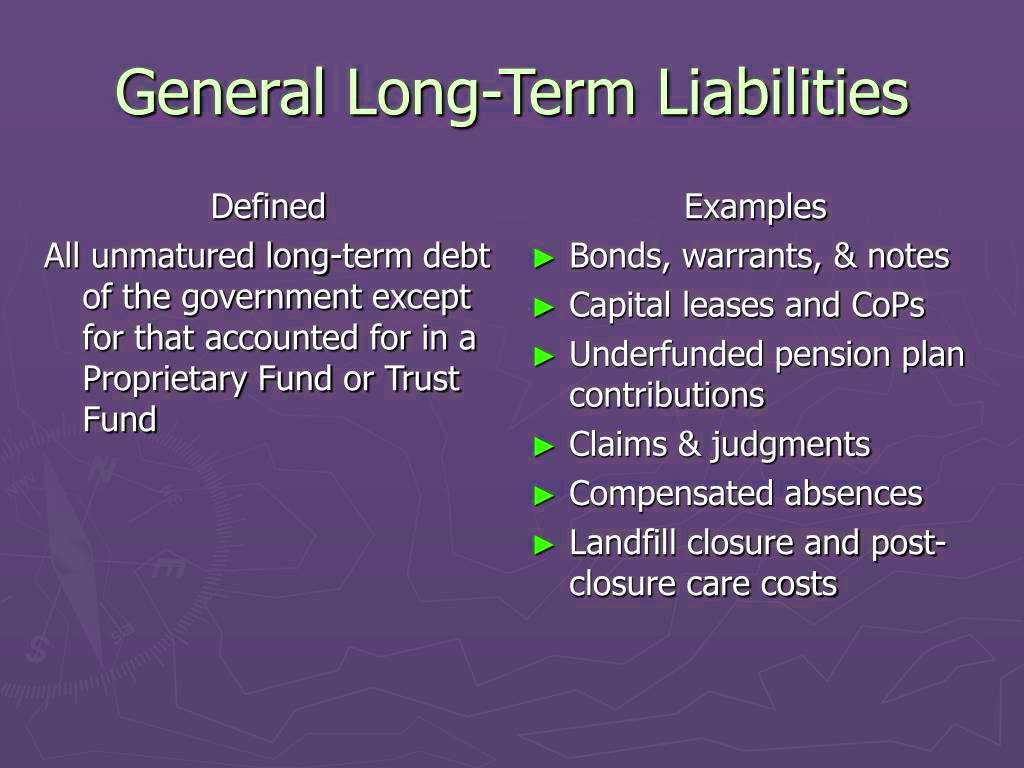Long-term liabilities, also called long-term debts, are debts that a company owes to third-party creditors that are payable beyond 12 months. This distinguishes them from current liabilities, which a company must pay within 12 months.
On the balance sheet, long-term liabilities appear along with current liabilities. Together they represent everything a company owes. Payment of these debts is mandatory.

Because long-term liabilities are payable beyond 12 months – often for many years – companies tend to use them to finance assets that are also of a lasting nature, such as land, buildings, and equipment. Payment and other details of these debts can be found in the notes to the financial statements included in the balance sheet.
Long-term liabilities are financial obligations of a company that are due more than one year in the future. The short-term portion of long-term liabilities is presented separately to provide a more accurate view of a company's current liquidity and the company's ability to pay short-term liabilities as they fall due. Long-term debt is also known as long-term debt or long-term debt.
An exception to the two options above concerns the refinancing of short-term debt into long-term debt. If there is an intention to refinance and there are indications that refinancing will begin, a company can report current liabilities as non-current liabilities because the liabilities are no longer due within 12 months after refinancing. In addition, a liability that is due but has a corresponding long-term investment that is intended to be used to settle the liability is classified as a long-term liability. The long-term investment must have sufficient funds to cover the debt.

The most common current liabilities on the balance sheet include trade payables, current liabilities such as bank loans or commercial paper issued to fund operations, and dividends payable.
Buyers record liabilities on their balance sheets as current liabilities, which represent financial claims against the company's assets. These are short-term debts with a clear maturity date, which is usually 90 days or less but can be as long as a year.
A payables account is a type of bank statement that lists how much the company owes its creditors, or its debts. The amount owed relates to a service or good that the company has already received but not yet paid for. These amounts owed are also known as liabilities.

Long-term accounts payable are debts with a maturity of more than 12 months. On the timeliness of the fulfillment of the obligation. On this basis, accounts payable are divided into: debt, the maturity of which has not yet come; overdue debt. Probability of repayment. Here, accounts payable are divided into: normal; doubtful; hopeless to recover.
Accounts payable includes the company's debts to:
Accounts payable can be divided into the following types:
On the timeliness of the fulfillment of the obligation.
On this basis, accounts payable are divided into:
Here, accounts payable are divided into:
On this basis, accounts payable can be divided into credit and non-bank.
 What is P R bond?
27/11/2023
What is P R bond?
27/11/2023
 What is Compulsory Convertible Debentures?
27/11/2023
What is Compulsory Convertible Debentures?
27/11/2023
 Dynamics of Central Asian Economies
17/11/2023
Dynamics of Central Asian Economies
17/11/2023